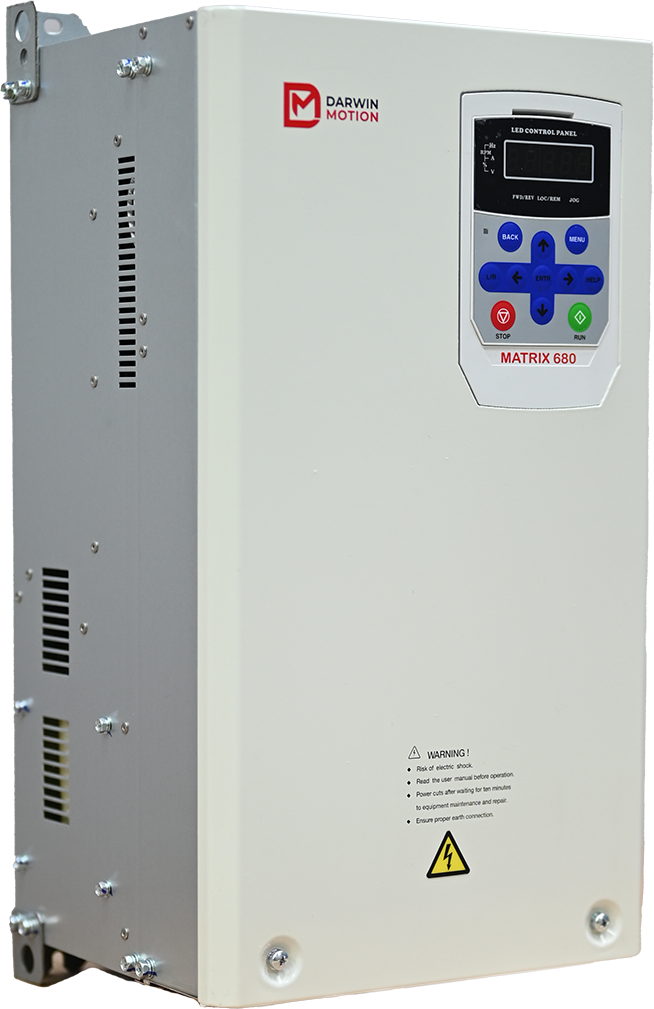Posted on 4th Apr 2025

In modern HVAC (Heating, Ventilation, and Air Conditioning) systems, chillers play a crucial role in maintaining a comfortable indoor environment by cooling large buildings or industrial facilities. Traditionally, chillers operate at a constant speed, regardless of the demand for cooling. However, advancements in technology have led to the integration of Variable Frequency Drives for chiller systems, offering several benefits related to energy efficiency, cost savings, and improved performance. This article explores the role of VFDs in chiller systems, their advantages, and the impact they have on energy consumption and system performance.
A Variable Frequency Drive (VFD) is an electronic device that controls the speed of an electric motor by varying the frequency of the electrical power supplied to the motor. By adjusting the motor speed in real-time, VFDs enable precise control over mechanical processes such as fans, pumps, and compressors. In the case of chillers, VFDs are used to regulate the speed of the compressor, which is the heart of the system. The ability to adjust compressor speed enables more efficient and responsive cooling, as opposed to running the compressor at a fixed, constant speed.
In a traditional chiller system, the compressor runs at full speed regardless of the cooling load required. However, in many cases, the cooling demand varies throughout the day, meaning that the chiller may be running inefficiently for extended periods. VFDs allow the compressor speed to adjust to the actual cooling load, reducing energy consumption when demand is low and ensuring optimal performance during peak cooling periods.
By continuously monitoring parameters such as temperature and pressure, VFDs make real-time adjustments to the motor speed. This allows the chiller to operate in a more energy-efficient manner, avoiding unnecessary overcooling or undercooling, and thus improving overall performance.
One of the most significant advantages of using VFDs in chiller systems is the potential for energy savings. Since chillers often operate under fluctuating loads, running a compressor at full speed all the time leads to wasted energy. By adjusting the speed of the compressor in response to varying demand, VFDs reduce energy consumption by ensuring the system only uses the amount of power necessary to meet the required cooling load.
The energy savings can be substantial, especially in large facilities with high cooling demands. On average, using VFDs can reduce energy consumption by up to 30%, depending on the system's operating conditions.
VFDs help reduce wear and tear on chiller components, particularly the compressor, by minimizing the mechanical stress caused by constant on/off cycling. This results in fewer breakdowns and a longer lifespan for the equipment. By operating at variable speeds, the compressor experiences smoother transitions and operates within its optimal range, reducing the frequency of maintenance and repair needs.
VFDs allow chiller systems to better respond to changing conditions. By continuously adjusting the compressor speed to meet the exact cooling demand, the system can operate more efficiently. This leads to better temperature control and greater comfort for building occupants. Additionally, the system can be more responsive to changes in external conditions, such as outdoor temperature fluctuations, ensuring consistent and reliable cooling.
Reducing energy consumption not only saves money but also helps reduce the carbon footprint of a building or facility. Since VFDs improve the efficiency of chiller systems, they help lower greenhouse gas emissions associated with energy production. This makes VFD-equipped chillers an environmentally friendly choice, especially in buildings striving to achieve sustainability certifications such as LEED (Leadership in Energy and Environmental Design).
While the initial cost of installing a VFD may be higher than a traditional chiller system, the long-term savings in energy and maintenance costs make it a cost-effective investment. The reduction in energy bills, combined with extended equipment lifespan and fewer repair requirements, contributes to a lower total cost of ownership over the life of the system.
Before retrofitting a chiller with a VFD, it's essential to ensure that the system is compatible with the technology. The compressor, electrical components, and control systems must be able to work in conjunction with the VFD for optimal performance. In some cases, modifications may be required to integrate the VFD effectively.
Although VFDs offer substantial long-term savings, the initial installation cost can be higher than traditional systems. However, with the potential for significant energy savings and reduced operating costs, the return on investment (ROI) can be realized within a few years.
To maximize the benefits of VFDs, it's crucial to properly size the drive and configure the system. Over-sizing or under-sizing the VFD can lead to inefficiencies, so it's essential to consult with a professional to determine the right specifications based on the chiller's capacity and expected load variations.
Darwin Motion Variable Frequency Drives are a valuable tool for improving the performance and efficiency of chiller systems. By allowing compressors to operate at variable speeds, VFDs enable chillers to adjust to changing cooling demands, reducing energy consumption, extending equipment life, and lowering operating costs. As energy efficiency becomes an increasingly important priority in the built environment, the adoption of VFD technology in chiller systems is expected to grow, contributing to more sustainable, cost-effective, and reliable cooling solutions.